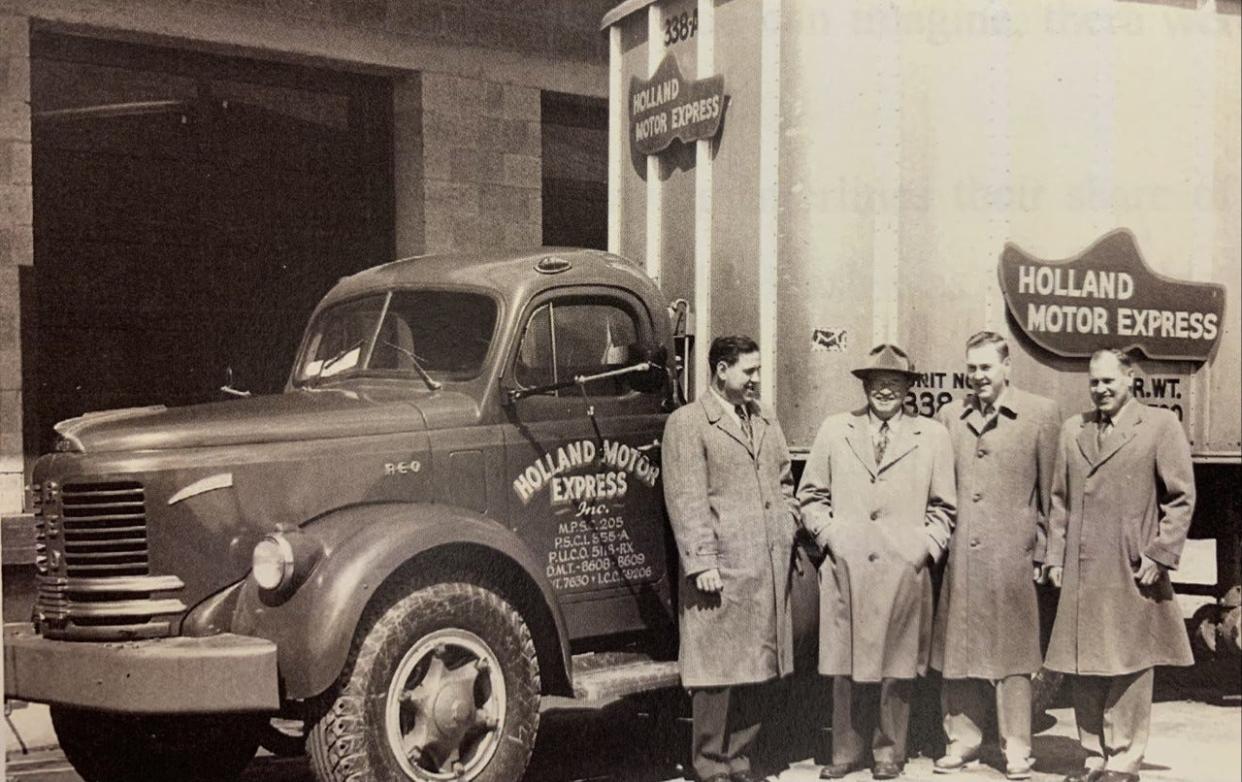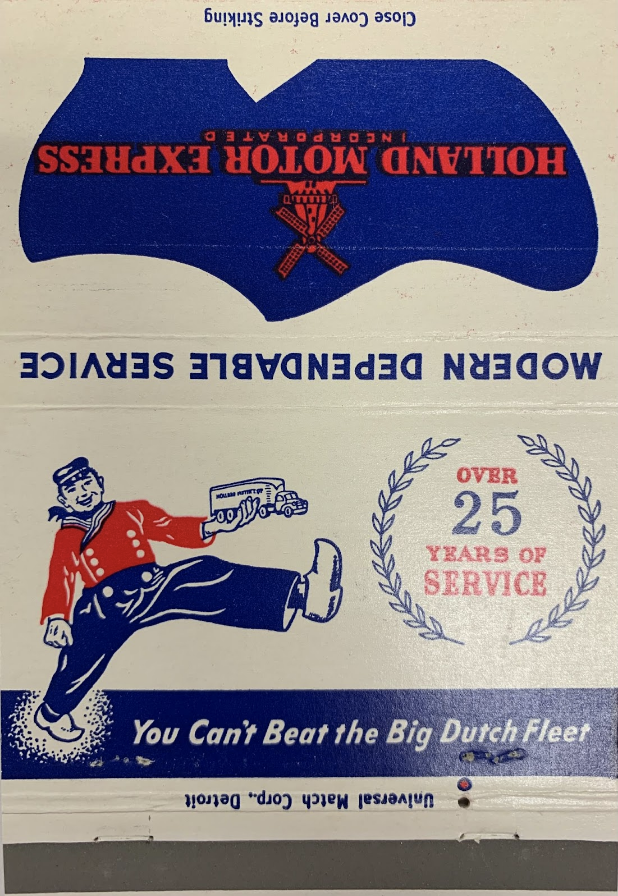Steve VanderVeen: The continued rise, and eventual acquisition, of Holland Motor Express

After a decade of struggling, John and Katherine Cooper’s business, Holland Motor Express, was finally growing. It got a boost when Congress passed The Motor Carrier Act of 1935, which required new trucking firms to obtain a “certificate of public convenience and necessity" through the Interstate Commerce Commission.
More:Steve VanderVeen: The foundation of Holland's same-name trucking company
More:Steve VanderVeen: Holland trucking company transported oil, celery and a rhinoceros
Since Holland Motor Express was already running between Holland and Muskegon, Grand Haven, Grand Rapids, Benton Harbor, Kalamazoo, Michigan City, Gary, East Chicago, Hammond, Whiting, Calumet City and Chicago — as well as between those cities and Indianapolis, Kokomo, South Bend, Plymouth and Fort Wayne — the ICC granted those certificates. In effect, the law protected the trucking industry from cutthroat competition.
In 1936, the Coopers' son, Charles, joined the company. As the economy grew again, so did Holland Motor Express. By 1939, Holland Motor Express employed 58 people.
In 1940, the company remodeled the old canning factory. It removed the second story and chimney and put the loading dock and garage under cover. John and Katherine re-purposed the canning factory’s bricks, using them to build their new house at 583 Elmdale Court.
The company also built new terminals in Muskegon and on Scribner Avenue in Grand Rapids. That year, John and Katherine’s son, Robert, joined the company. To celebrate, for two days they hosted an ice skating party for school-aged children under the roof of their remodeled terminal.

But during World War II, Robert left to serve. Back home, rationing made it difficult to buy new trucks and parts.
Still, in 1942, Holland Motor Express purchased Phoenix Motor Freight — which operated between Louisville, Kentucky and Chicago — and Root Transit Lines, which operated between Cincinnati, Ohio and Indianapolis. The company also experienced its first strike, initiated by the Teamsters in Muskegon.
In 1943, the company built a terminal at 1900 W. 13th St. in Chicago. That year, its drivers voted to join the American Federation of Labor Teamsters Union. So, while Robert was fighting in the Battle of the Bulge, defending the Allies against Germany’s last military offensive campaign, the Teamsters under Jimmy Hoffa were organizing to picket Holland Motor Express.
When Standard Grocery drivers started to pick up freight at Holland Motor Express because Holland Motor Express drivers refused to cross the picket line, the Teamsters picketed Standard Grocery as well. Frustrated, John declared publicly that he would liquidate his company. That got the union’s attention, and the Teamsters relented.
Maybe because of his tough stance against the union, the Michigan Truckers Association elected John as president, and re-elected him the next year. Around this time, John and Katherine’s youngest son, Gerald, began working at Holland Motor Express as a truck washer. Meanwhile, the company worked on plans to build a large Grand Rapids terminal.
In 1950, the company built a new terminal in Holland on Fifth Street on the east side of Central Avenue. Its slogan was “You Can’t Beat the Big Dutch Fleet.” In 1952, Gerald (“Jerry”), joined the management team.

In 1958, John and Katherine sold their interest in Holland Motor Express to Charles, Robert, and Gerald.
By 1969, Holland Motor Express owned nine terminals and over 600 pieces of equipment. In 1972, the company built a large terminal at 750 E. 40th St.
Subscribe:Get all your breaking news and unlimited access to our local coverage
John and Katherine passed away in 1975. A few years later, the federal government passed the Motor Carrier Act of 1980, abolishing the Interstate Commerce Commission and deregulating the trucking industry. The result was greater competition between trucking companies, which reduced trucking rates.
That cut shipping costs, including truckers’ real wages, paving the way for big box retailers and, later, online shopping. It also brought consolidation to the trucking industry as firms struggled to maintain profits. From this regulatory change, Holland Motor Express benefitted.
In 1984, TNT purchased Holland Motor Express and greatly expanded its operation. Over the next 10 years, its revenues grew from $100 million to $1 billion. In 1996, its name changed to US Freightways Corporation (later USF Corporation). YRC Worldwide then purchased USF Holland in 2005. It's now part of Yellow Transportation.
Information for this story comes from Katherine Cooper’s "Memoirs of Holland Motor Express," Gerald Cooper’s "Holland Motor Express, Incorporated," Robert Swierenga’s "Holland, Michigan," and correspondence with former employees and the Cooper family.
— Community Columnist Steve VanderVeen is a resident of Holland. Contact him through start-upacademeinc.com.
This article originally appeared on The Holland Sentinel: The continued rise, and eventual acquisition, of Holland Motor Express


